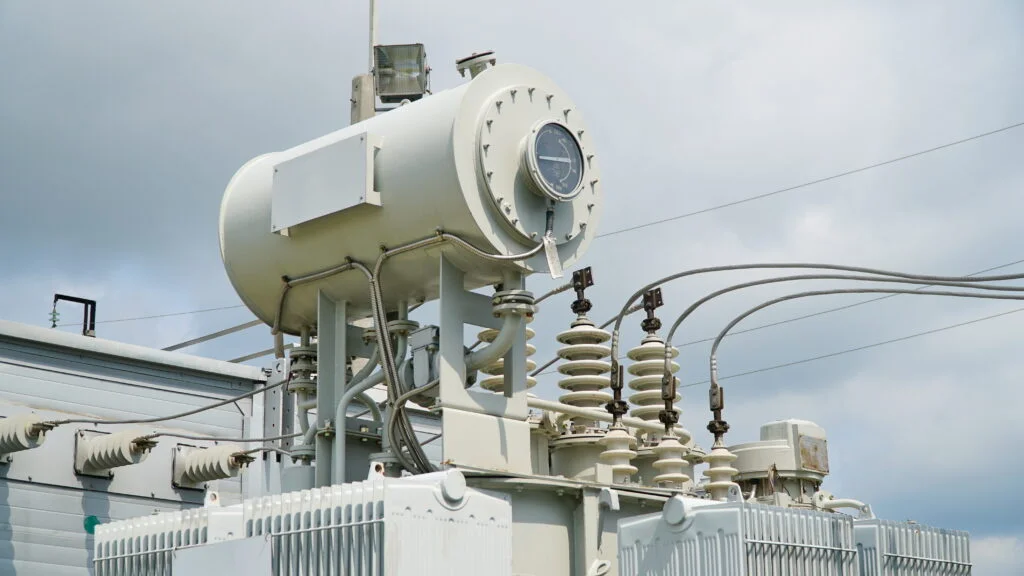Table of Contents
Amorphous core transformers are a revolutionary advancement in the world of electrical engineering, playing a crucial role in improving the efficiency of power distribution systems. As the demand for energy continues to grow, so does the need for more efficient and sustainable electrical equipment. Among the innovations designed to meet these demands are amorphous core transformer which are becoming increasingly popular for their ability to reduce energy losses and improve overall performance. In this article, we will explore the structure, working principle, advantages, and applications of amorphous core transformers.
What is an Amorphous Core Transformer?
An amorphous core transformer is a type of transformer that uses an amorphous metal alloy instead of the traditional silicon steel to make the core. Amorphous materials are non-crystalline, meaning their atomic structure lacks a regular pattern, unlike crystalline materials where atoms are arranged in a highly ordered structure. This unique atomic arrangement provides significant advantages in reducing the transformer’s core losses.
The core of a transformer is crucial because it is responsible for transferring the magnetic flux generated by the primary winding to the secondary winding. A typical transformer core is made of laminated sheets of electrical steel to minimize losses due to eddy currents. However, in an amorphous core transformer, the core is composed of an alloy of iron, nickel, and other metals, which have been specially processed to create a non-crystalline structure. This material exhibits lower hysteresis losses compared to traditional steel cores, contributing to enhanced efficiency.
How Do Amorphous Core Transformers Work?
The working principle of an amorphous core transformer is similar to that of any other transformer. It operates on the principles of electromagnetic induction, where the primary winding generates a magnetic field that induces a current in the secondary winding. However, the key difference lies in the construction of the core.
In a traditional transformer, the core is made of silicon steel, which is a crystalline material. When the transformer operates, the magnetic flux in the core reverses direction with each alternating current cycle. This reversal causes losses in the form of heat due to the resistance of the material. In contrast, the non-crystalline structure of the amorphous core allows for lower resistance to the flow of magnetic flux, which leads to fewer losses and better efficiency.
Additionally, amorphous materials have lower magnetostriction, meaning they exhibit less mechanical deformation under the influence of a magnetic field, reducing vibrations and noise during operation.
Advantages of Amorphous Core Transformers
- Reduced Core Losses: One of the most significant advantages of amorphous core transformers is their ability to reduce core losses. Core losses in a transformer result from the energy dissipated in the core material when it is magnetized and demagnetized. Amorphous metal alloys have lower hysteresis losses compared to traditional silicon steel, leading to reduced energy wastage and improved overall efficiency.
- Energy Efficiency: Due to the reduction in core losses, amorphous core transformers consume less power for the same output. This makes them highly energy-efficient, particularly in the long term. The energy saved during operation can lead to significant cost savings and contribute to reducing the overall carbon footprint of power distribution networks.
- Environmental Benefits: By using less energy and reducing heat generation, amorphous core transformers are more environmentally friendly. They contribute to the global effort to minimize energy consumption and reduce greenhouse gas emissions. In addition, the reduced need for cooling also lowers the environmental impact of the transformer’s operation.
- Smaller and Lighter: Amorphous core transformers can be made smaller and lighter than their traditional counterparts, making them more versatile and easier to install in various settings. This can be particularly beneficial in urban areas where space is limited, or in industries that require compact and efficient solutions.
- Lower Operating Costs: Since amorphous core transformers experience less energy loss and require less cooling, their operating costs tend to be lower over time. This makes them a more cost-effective solution in the long run despite the potentially higher initial investment.
Applications of Amorphous Core Transformers
Amorphous core transformers are used in a wide range of applications, particularly in industries and locations where energy efficiency is a priority. Some of the primary applications include:
- Power Distribution: Amorphous core transformers are commonly used in power distribution systems, where minimizing energy losses is critical to maintaining an efficient grid. These transformers are often employed in substations and electrical grids that require high reliability and low operational costs.
- Renewable Energy Systems: As renewable energy sources such as wind and solar continue to grow, the need for efficient energy transmission and distribution systems also rises. Amorphous core transformers are well-suited for these systems, helping to optimize the flow of electricity and reduce energy losses.
- Industrial Applications: Factories and industrial plants, where large amounts of electrical energy are consumed, can greatly benefit from the efficiency of amorphous core transformers. They help to reduce the operational costs of large motors, machinery, and equipment that require steady and reliable power.
- Residential and Commercial Use: These transformers are also finding their way into residential and commercial buildings, where their energy-efficient nature can help reduce electricity costs. They are commonly used in areas that require reliable and consistent power delivery, such as hospitals, data centers, and office buildings.
Conclusion
Amorphous core transformers represent a significant advancement in transformer technology, offering substantial benefits in terms of energy efficiency, reduced operating costs, and environmental sustainability. As the global demand for electricity increases and the need for efficient power distribution becomes more critical, amorphous core transformers are poised to play a key role in the future of electrical engineering. By providing a greener, more cost-effective solution to power distribution, these transformers are helping pave the way for a more sustainable energy future.

